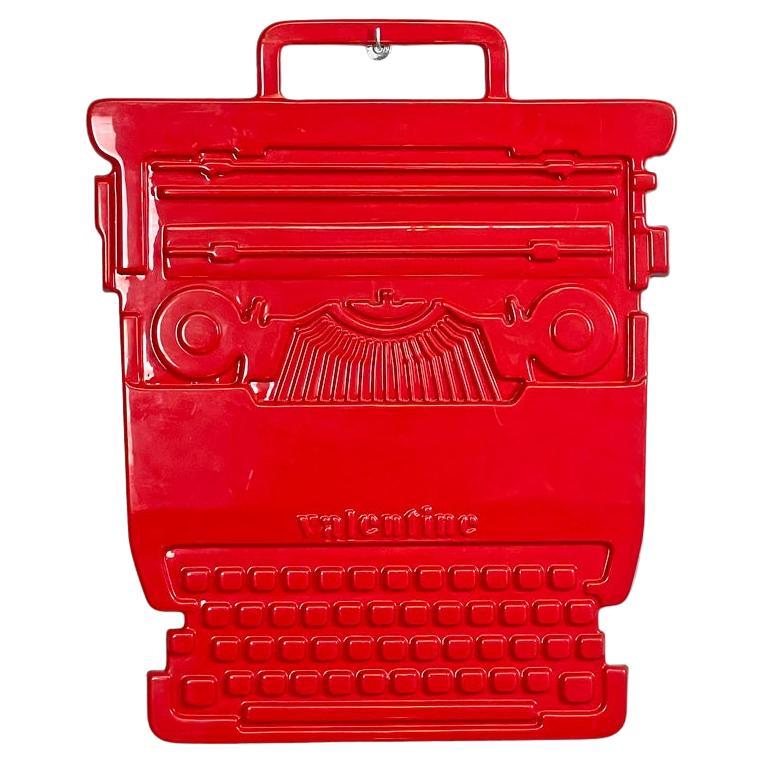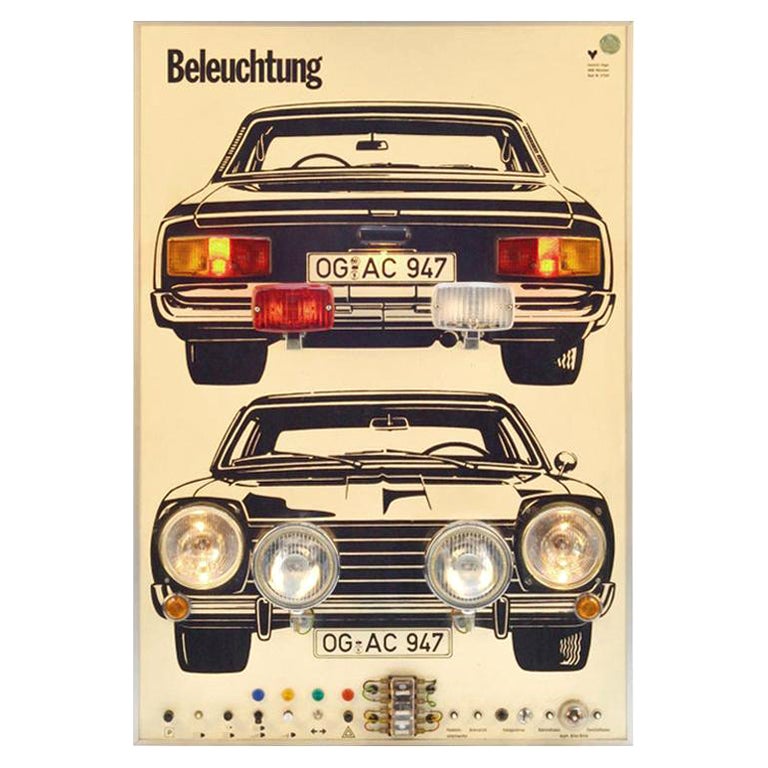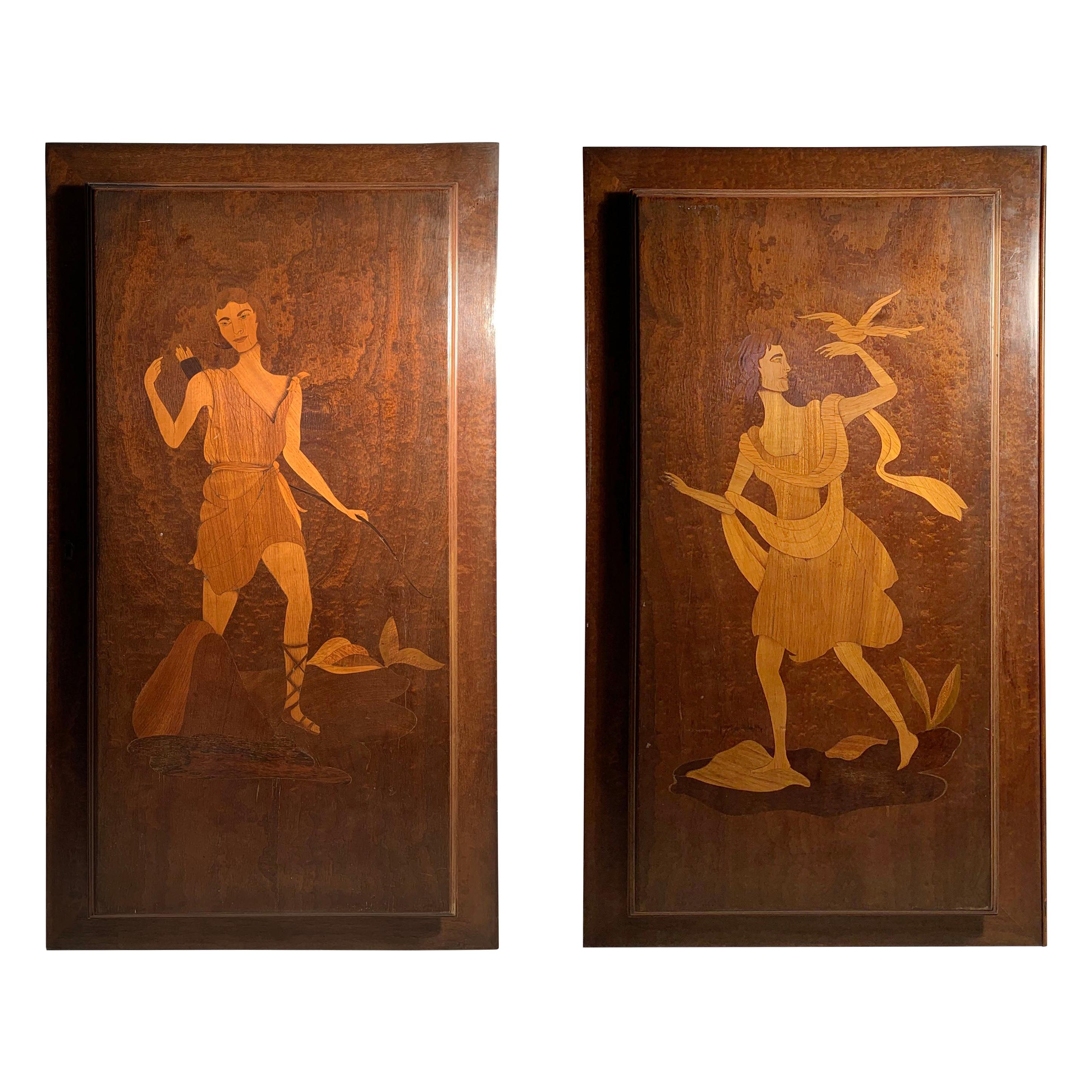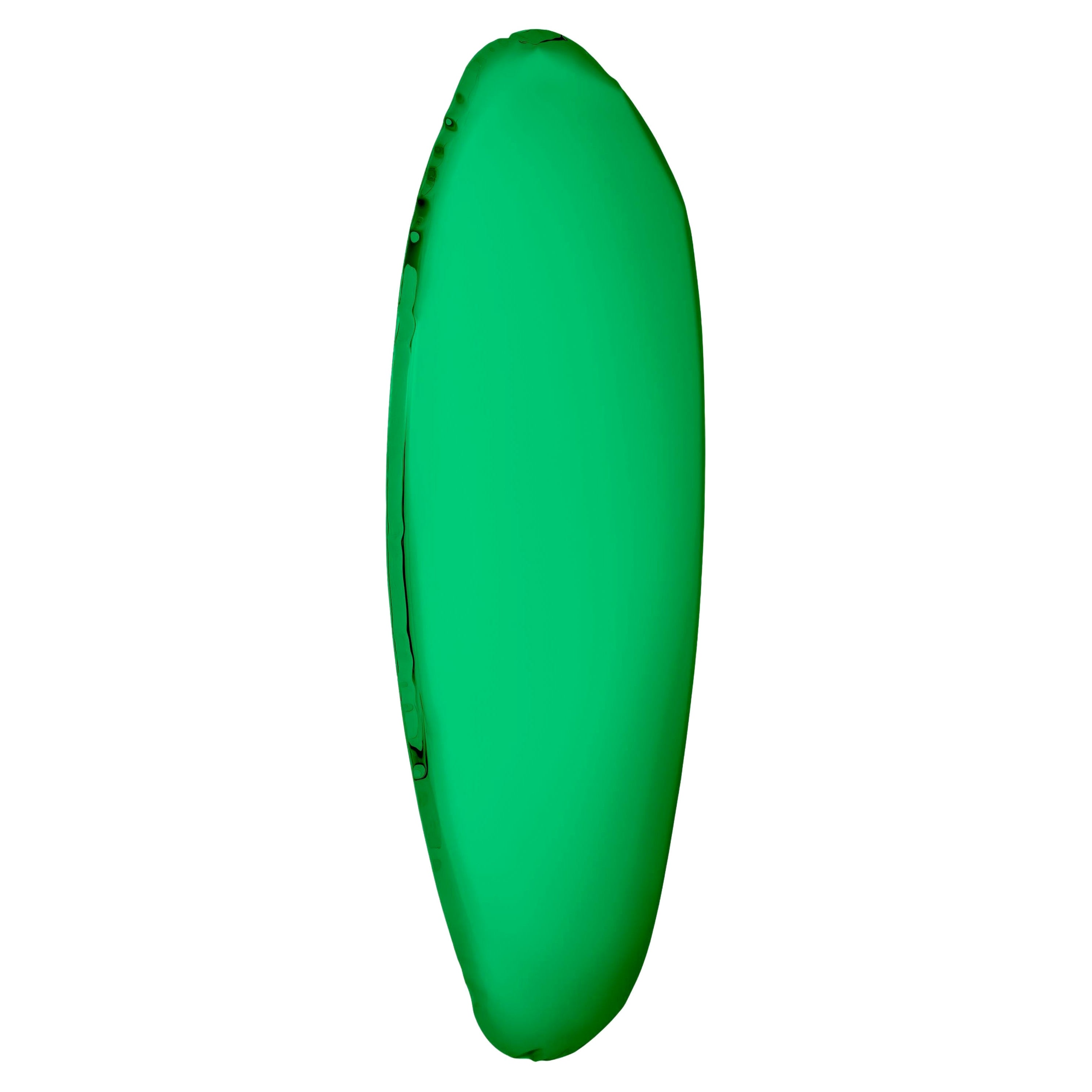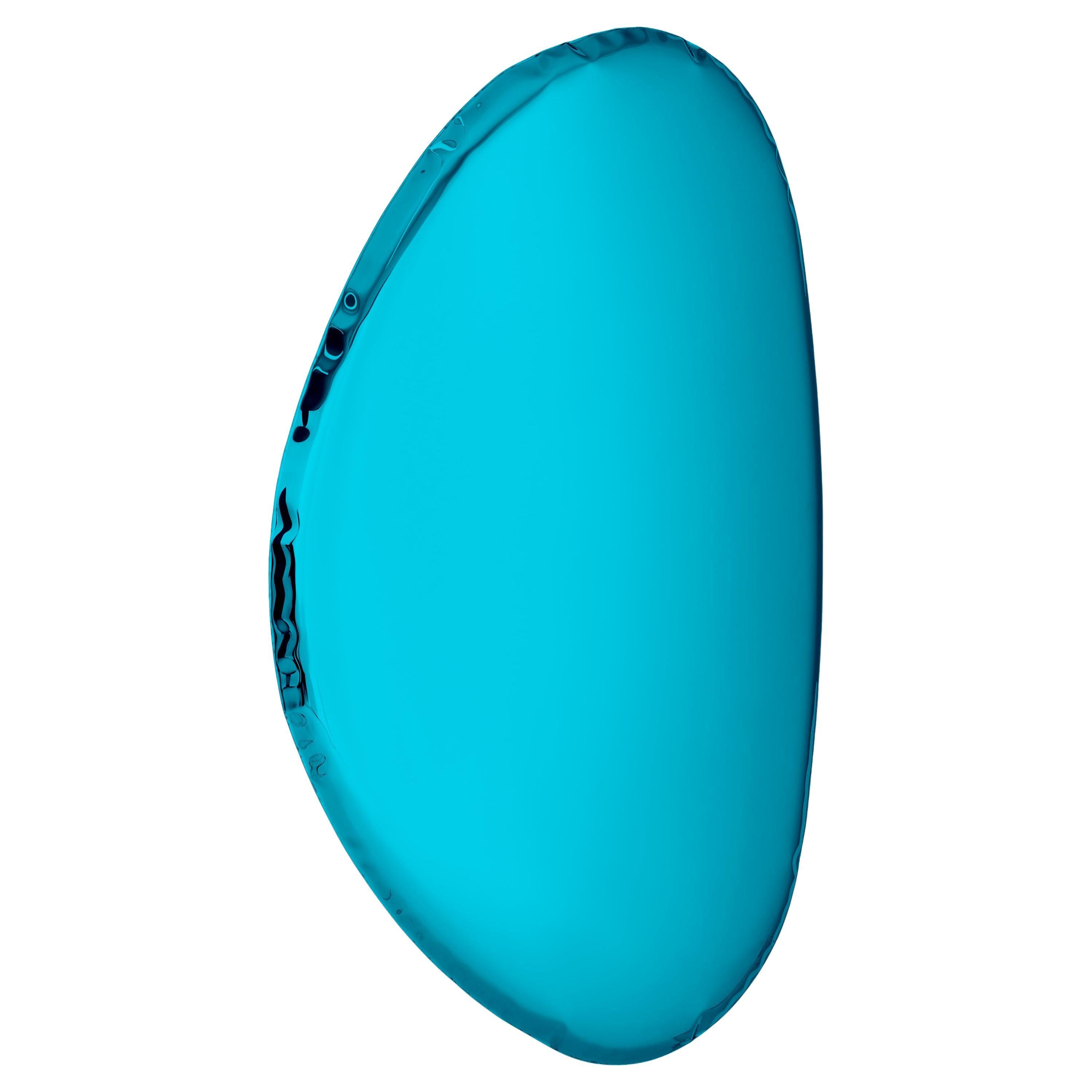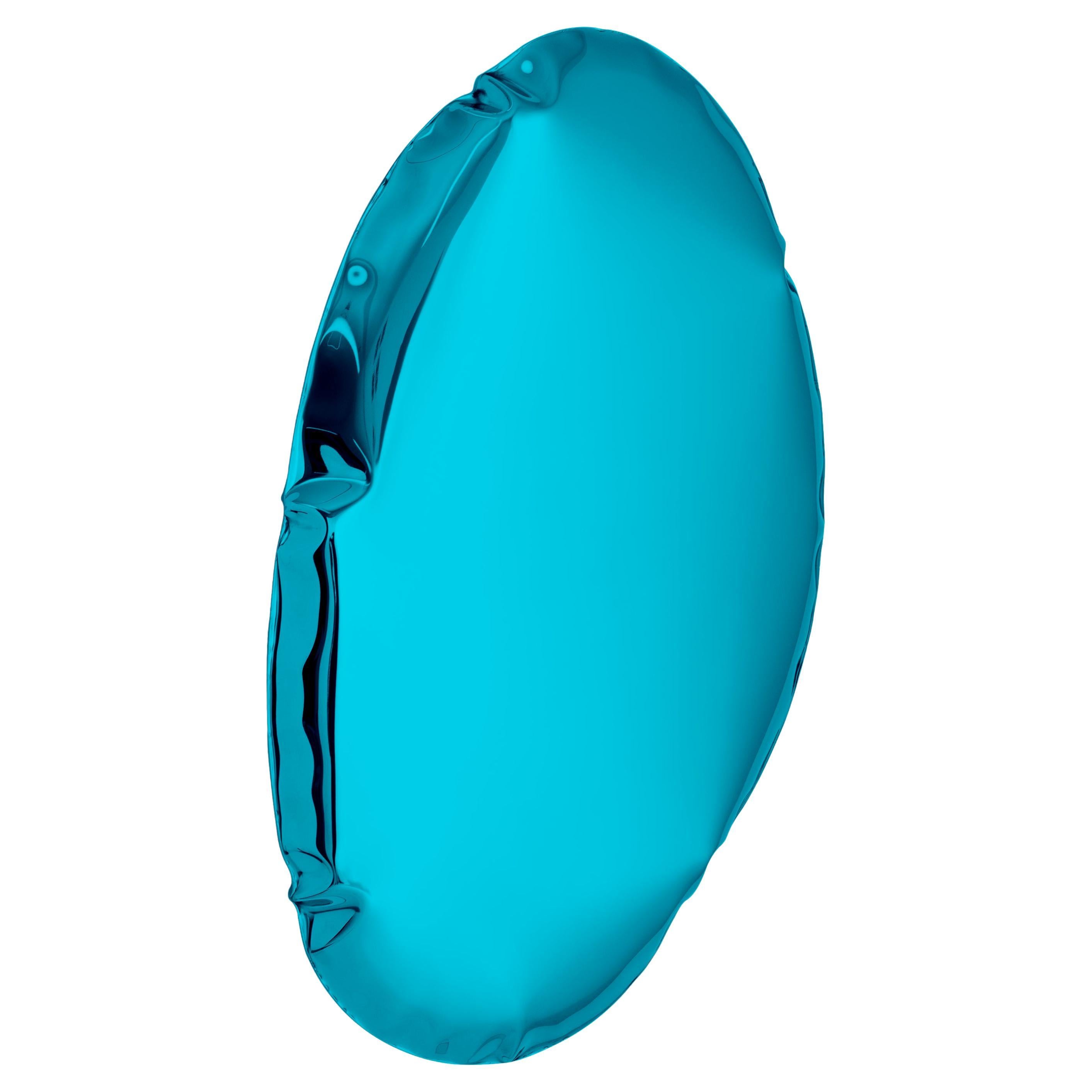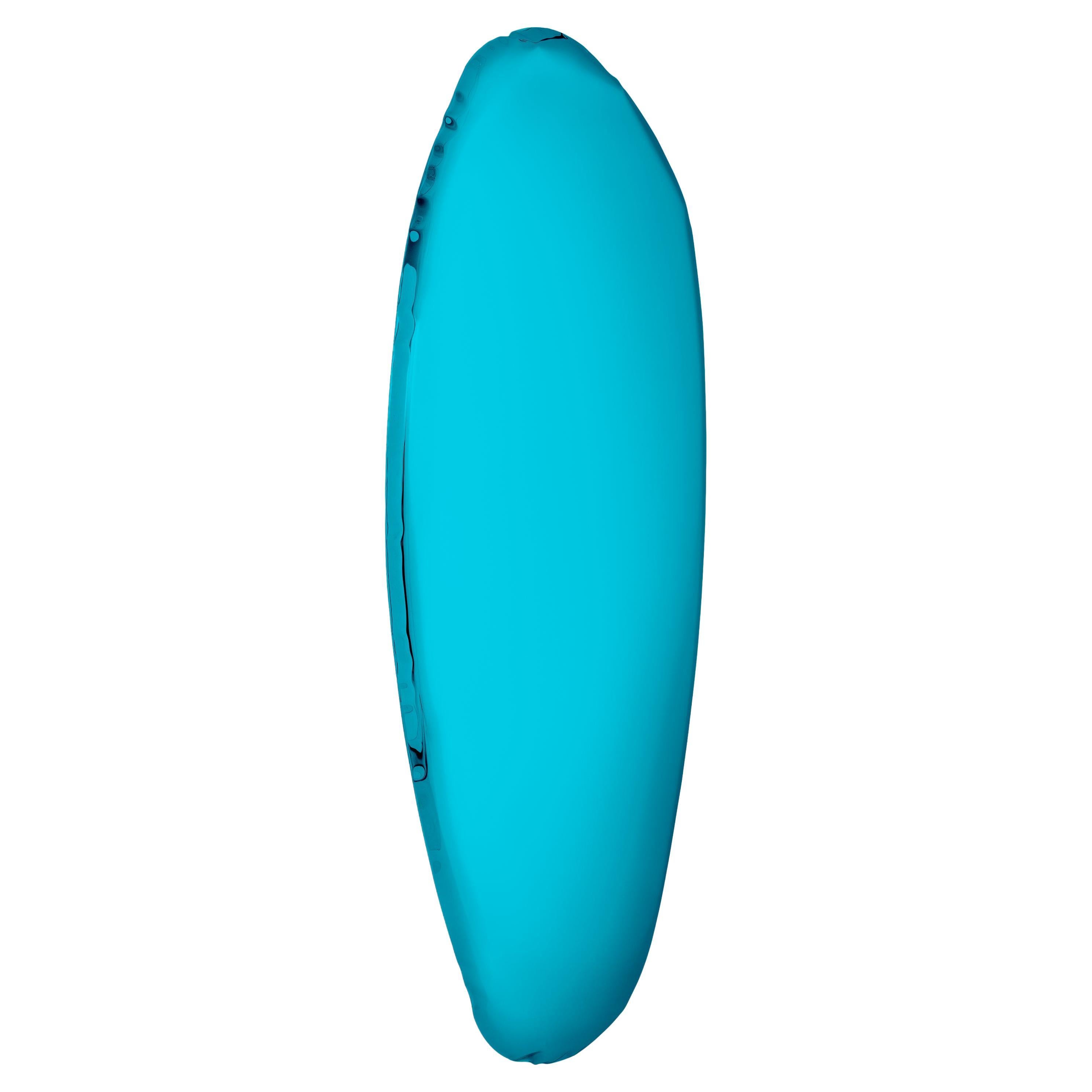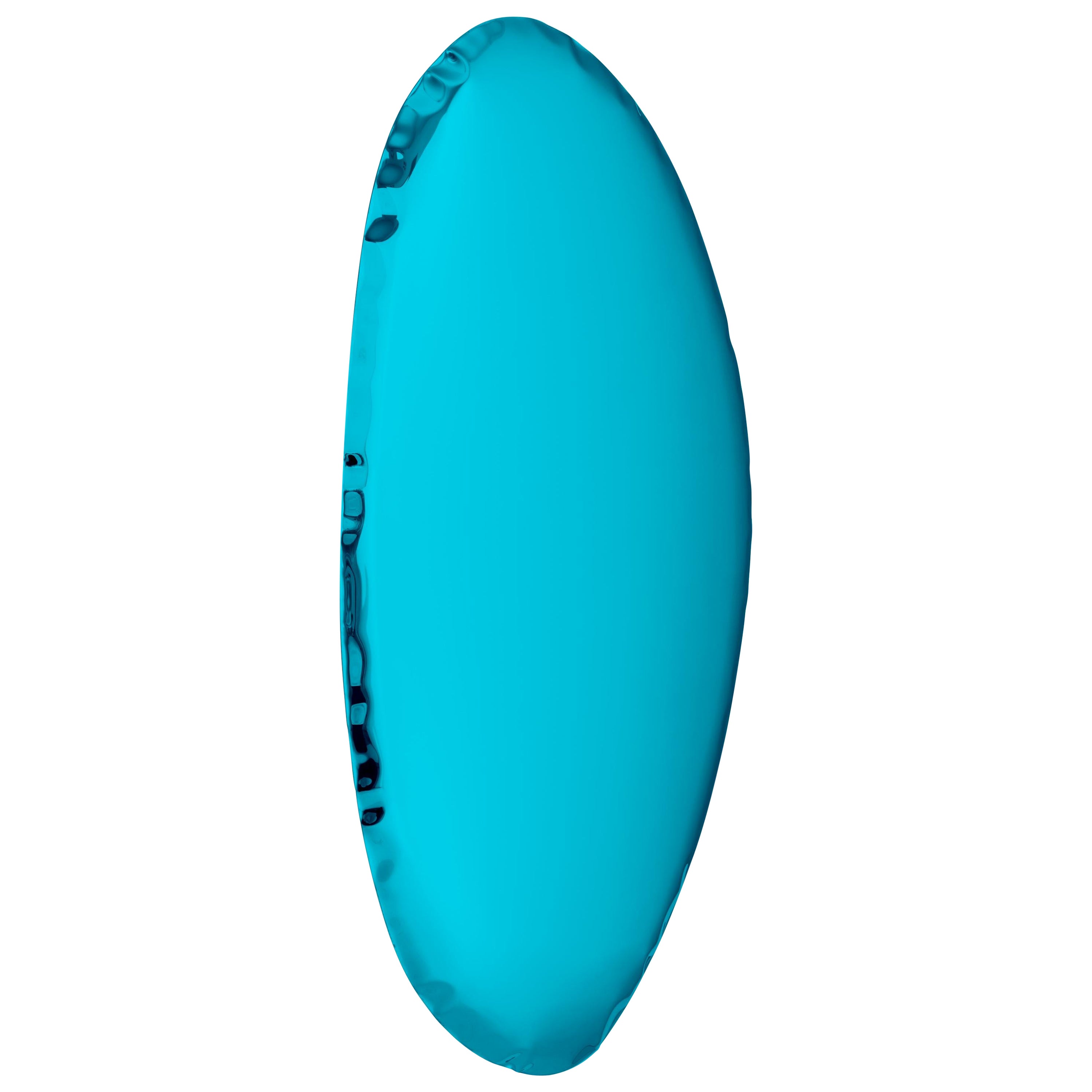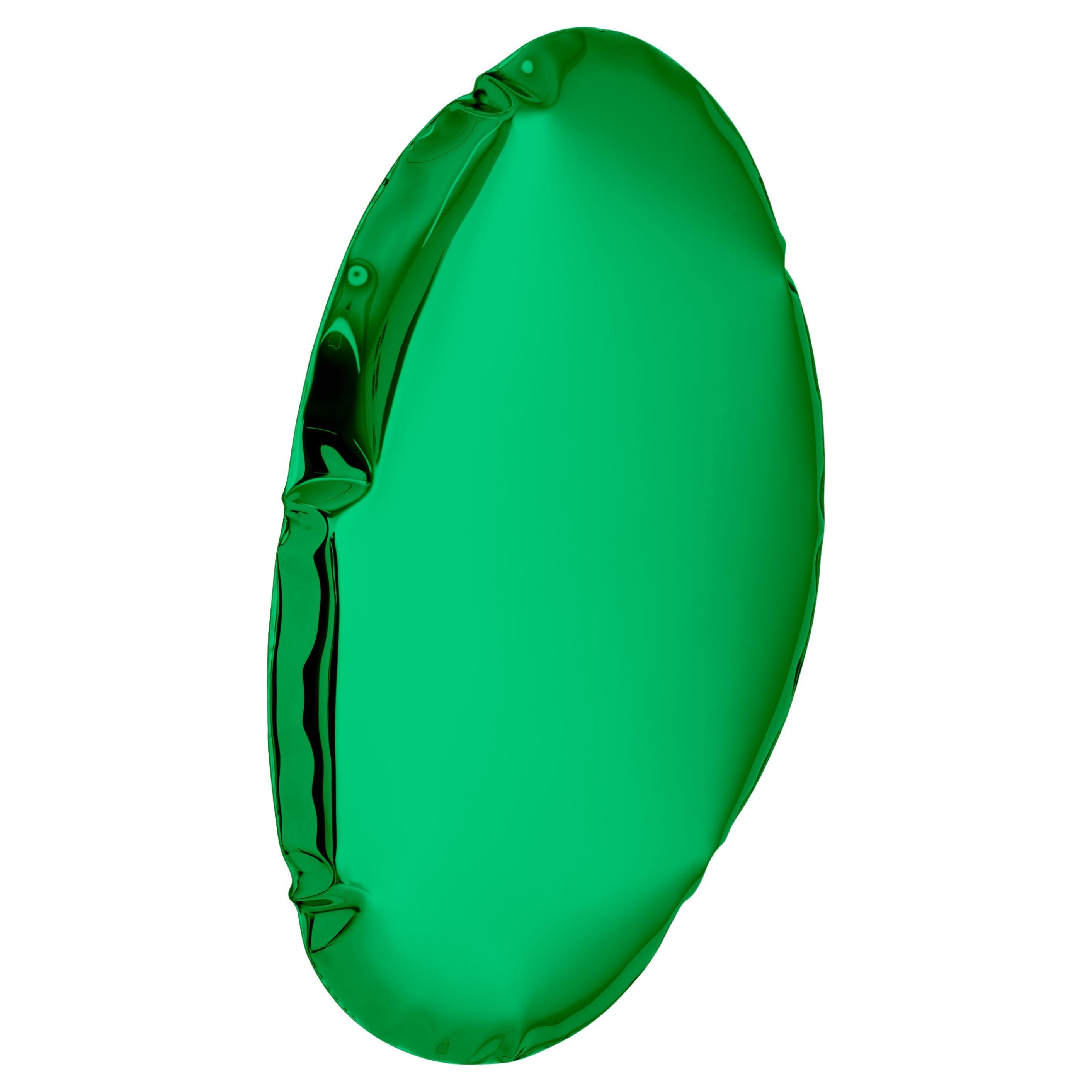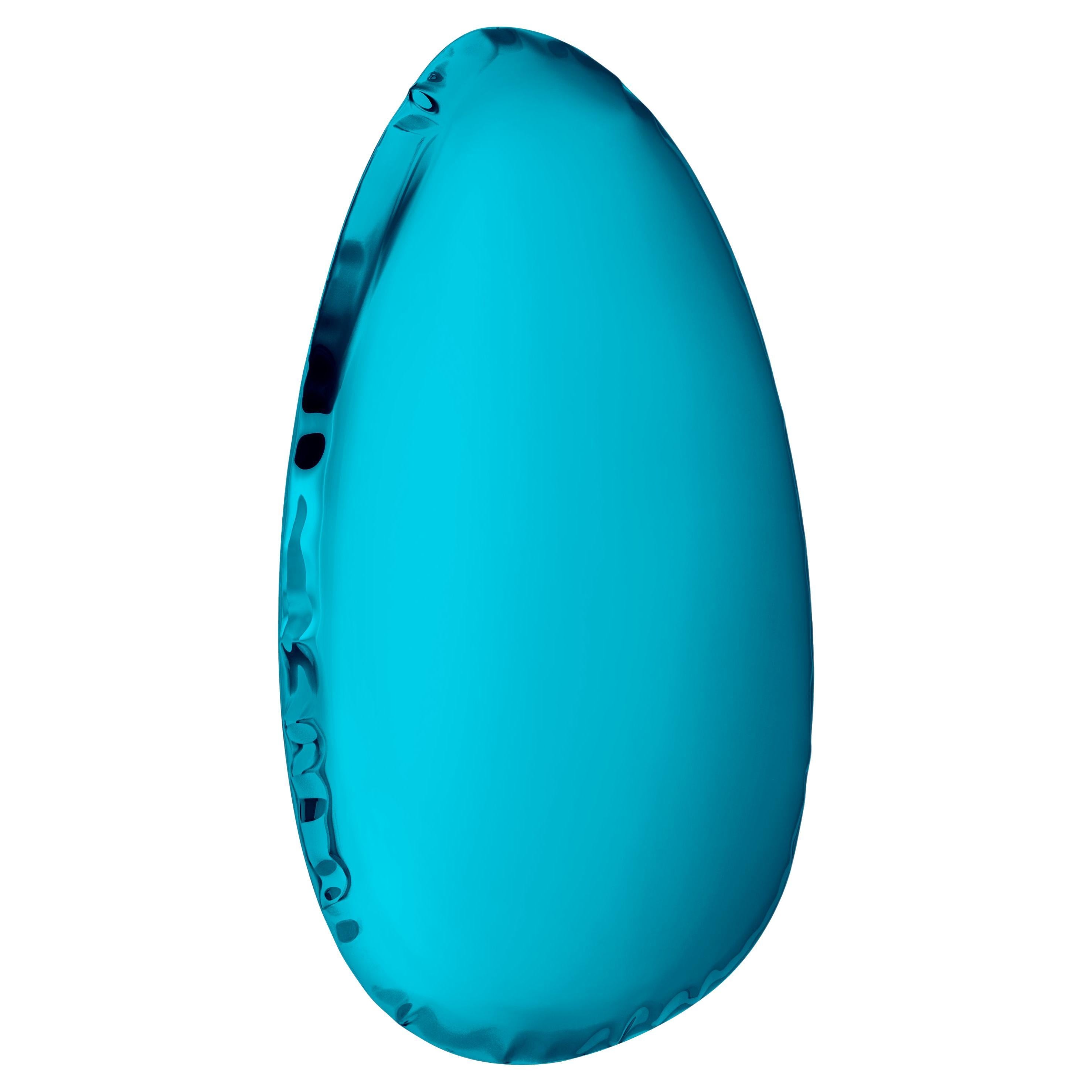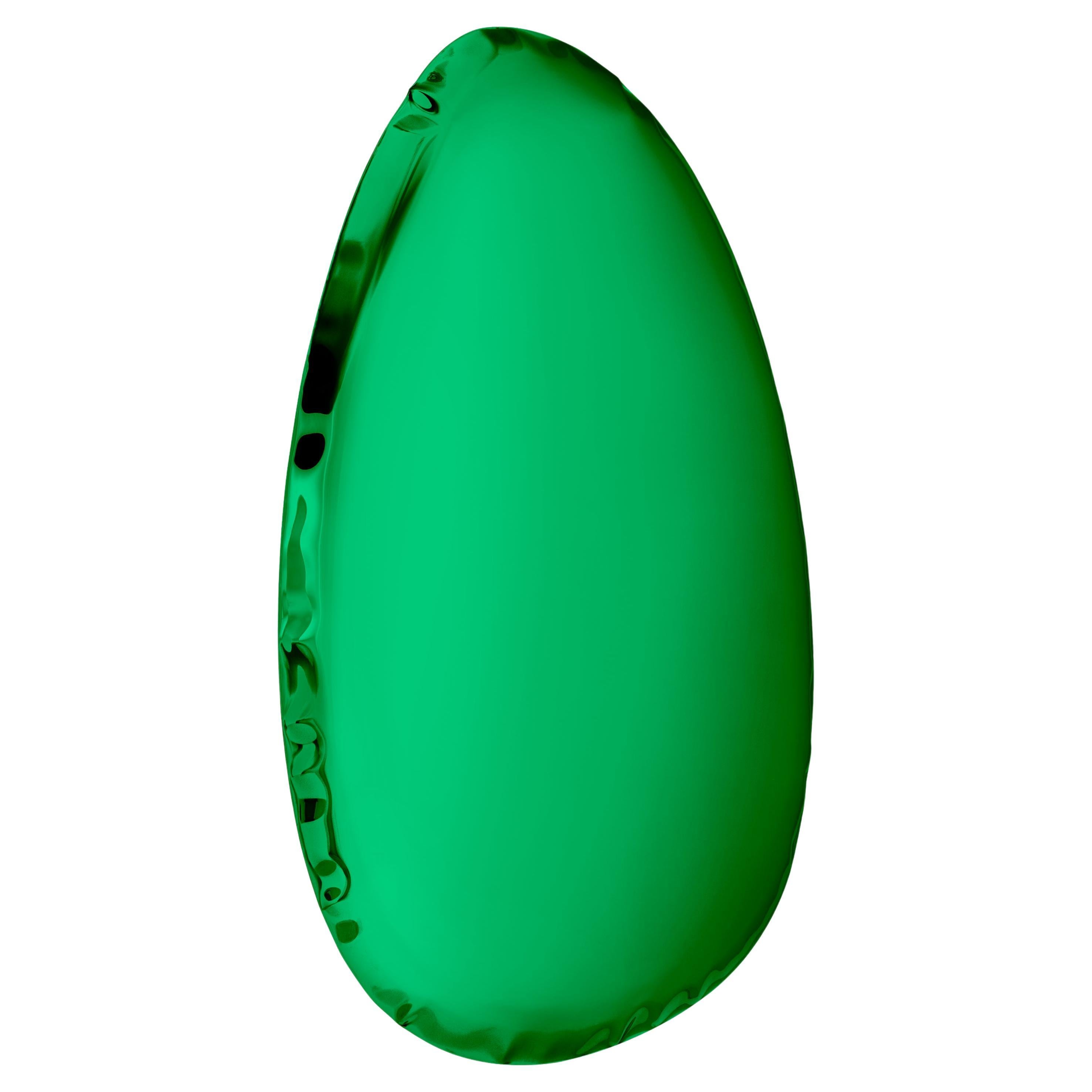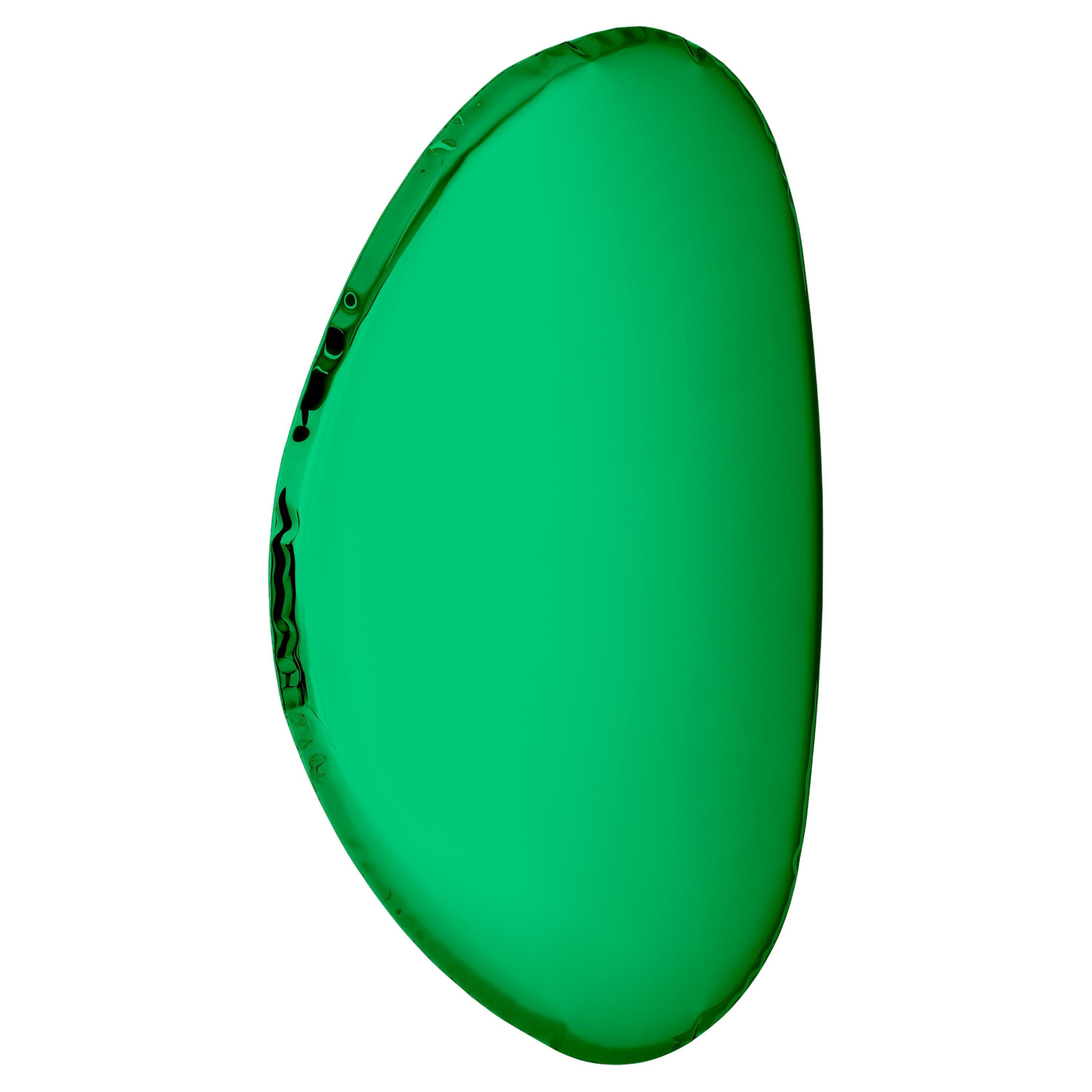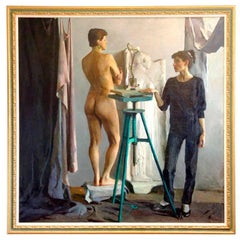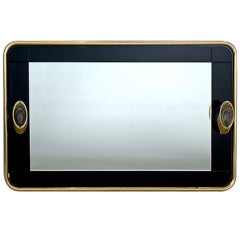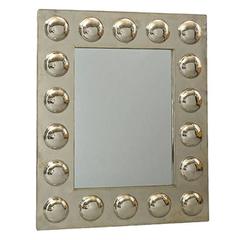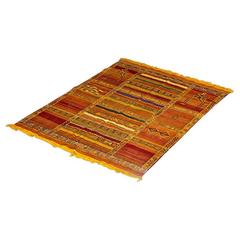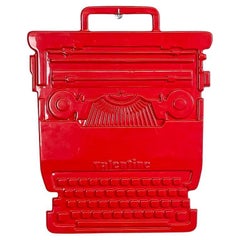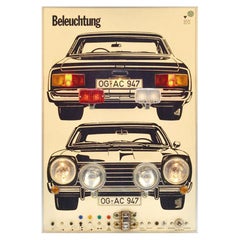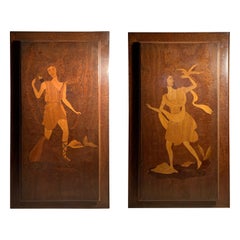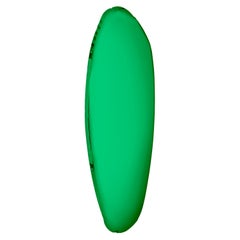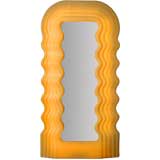
Illuminated "Ultrafragola" Wall Mirror by Ettore Sottsass
View Similar Items
Want more images or videos?
Request additional images or videos from the seller
1 of 4
Illuminated "Ultrafragola" Wall Mirror by Ettore Sottsass
About the Item
ETTORE SOTTSASS (1917-2007) was a grandee of late 20th century Italian design. Best known as the founder of the early 1980s Memphis collective, he also designed iconic electronic products for Olivetti, as well as beautiful glass and ceramics.
Wherever he went, Ettore Sottsass carried a camera to photograph anything that caught his eye. Doors, temples, kitchens, billboards: nothing escaped him. This was a man who took 1,780 photographs on a twelve day trip to South America, who toyed with publishing a book consisting of pictures of walls and for years photographed every hotel room in which he had slept with a woman.
Once in Marseille, Sottsass was snapping at a barber’s shop sign when he was forced to surrender his camera. It was a smuggler’s nookie nest. In Egypt, he was photographing a rotting window when the police pounced. The window belonged to a police station. "Most normal people (not just policemen) don’t like to face the reality that all things eventually decay," he wrote later. "I believe that the future only begins when the past has been completely dismantled, its logic reduced to dust and nostalgia is all that remains."
Ettore Sottsass devoted his life and work to dismantling the past in his various roles as artist, architect, industrial designer, glass maker, publisher, theoretician and ceramicist. The past to him was the rationalist doctrine of his father, Ettore Sottsass Sr., a prominent Italian architect. Fond though he was of his parents, Ettore Jr. favoured a different approach. "When I was young, all we ever heard about was functionalism, functionalism, functionalism," he once said. "It’s not enough. Design should also be sensual and exciting."
Born in Innsbruck in his mother’s native Austria in 1917, Ettore Jr. was marked out as an architect from an early age. His parents moved to Turin in 1929 because it boasted the best architecture faculty in Italy and Ettore Sr. wanted his son to study there. Although he also loved painting, Ettore Jr. acquiesced to his father’s wishes and gained an architecture degree in 1939.
No sooner had he graduated than he was called up into the Italian army only to spend most of World War II in a Yugoslavian concentration camp. "There was nothing courageous or enjoyable about the ridiculous war I fought in," Sottsass wrote. "I learned nothing from it. It was a complete waste of time."
After the war, he worked on housing projects with his father before moving to Milan in 1946 to curate a craft exhibition at the Triennale. For the next decade, Sottsass continued to curate as well as pursuing his passion for painting, writing for Domus, the art and architectural magazine, designing stage sets and founding a practice as an architect and industrial designer.
In 1956, Sottsass and his first wife, Fernanda Pivano, travelled to New York. "It really did look like (Fritz Lang's 1926 film) Metropolis: everybody rushing around, no one caring a hoot," he recalled. "It was incredible, in fact, I changed inside out." He was commissioned to create a line of ceramics during this visit, but was also inspired to concentrate on industrial design, rather than architecture, after spending a month working in the studio of the US designer, George Nelson.
Back in Italy, Sottsass agreed to become a creative consultant to Poltronova, a furniture factory near Florence. In 1958 he accepted a more demanding consultancy role for the newly created electronics division of Olivetti, the Italian industrial group. Sottsass was hired by Adriano Olivetti, the founder, to work alongside his son, Roberto. Together with the engineer, Mario Tchou, they created a series of landmark products which were technically innovative and aesthetically appealing thanks to Sottsass’ love of pop art and Beat culture. They won the prestigious 1959 Compasso d’Oro with the Elea 9003, the first Italian calculator, and revolutionised typewriter design with Olivetti’s first electronic model, the Tekne, in an elegantly angular Sottsass case.
Throughout the 1960s, Sottsass travelled in the US and India while remaining a central figure in the Italian avant garde and designing more landmark products for Olivetti culminating in the bright red, poppy plastic 1970 Valentine typewriter which he described as "a biro among typewriters". Although Sottsass later dismissed the Valentine as "too obvious, a bit like a girl wearing a very short skirt and too much make-up, it is still seen as an iconic ‘pop’ product. His furniture was equally influential: notably the mid-1960s "superbox" closets in stripey plastic laminate developed for Poltronova. In 1972, Sottsass’ mobile, multi-functional fibreglass furniture unit was the toast of the Italy: The New Domestic Landscape exhibition at MoMA, New York.
By the late 1970s, Sottsass was working with Studio Alchimia, a group of avant garde furniture designers including Alessandro Mendini and Andrea Branzi, on an exhibition at the 1978 Milan Furniture Fair. Two years later, Sottsass, then in his 60s, split with Mendini to form a new collective, Memphis, with Branzi and other 20-something collaborators including Michele De Lucchi, George Sowden, Matteo Thun and Nathalie du Pasquier.
Memphis embodied the themes with which Sottsass had been experimenting since his mid-1960s ‘superboxes’: bright colours, kitsch suburban motifs and cheap materials like plastic laminates. But this time they captured the attention of the mass media as well as the design cognoscenti, and Memphis (named after a Bob Dylan song) was billed as the future of design. For the young designers of the era, it was an intellectual lightning rod which liberated them from the dry rationalism they had been taught at college and enabled them to adopt a more fluid, conceptual approach to design. The Memphis collective’s work was exhibited all over the world, until Sottsass quit in early 1985.
He then concentrated on Sottsass Associati, the architecture and design group where he worked with former Memphis members and younger collaborators, including industrial designer James Irvine and architect Johanna Grawunder. Sottsass returned to architecture in 1985 when commissioned to design a chain of shops for Esprit.
He completed a series of private houses – including one in Palo Alto for industrial designer, David Kelley - and public buildings, notably Malpensa 2000 airport near Milan. Sotsass Associati has also worked for Apple, NTT, Philips and Siemens, while Sottsass himself continued with his artisanal projects in glass and ceramics. Revered in Italy as a doyen of late 20th century design, Ettore Sottsass is also cited as a role model by young foreign designers, such as Ronan and Erwan Bouroullec, for the breadth - as well as the quality - of his work.
- Dimensions:Height: 76.38 in (194 cm)Width: 40.95 in (104 cm)Depth: 5.91 in (15 cm)
- Materials and Techniques:
- Place of Origin:
- Period:
- Date of Manufacture:1970''s
- Condition:
- Seller Location:London, GB
- Reference Number:Seller: 8571stDibs: U0801108404261
About the Seller
No Reviews Yet
Vetted Professional Seller
Every seller passes strict standards for authenticity and reliability
1stDibs seller since 2007
68 sales on 1stDibs
Associations
20th Century Specialists
Authenticity Guarantee
In the unlikely event there’s an issue with an item’s authenticity, contact us within 1 year for a full refund. DetailsMoney-Back Guarantee
If your item is not as described, is damaged in transit, or does not arrive, contact us within 7 days for a full refund. Details24-Hour Cancellation
You have a 24-hour grace period in which to reconsider your purchase, with no questions asked.Vetted Professional Sellers
Our world-class sellers must adhere to strict standards for service and quality, maintaining the integrity of our listings.Price-Match Guarantee
If you find that a seller listed the same item for a lower price elsewhere, we’ll match it.Trusted Global Delivery
Our best-in-class carrier network provides specialized shipping options worldwide, including custom delivery.More From This Seller
View All"Sisters in the Studio" by Nikolai Dubovik
By Nikolai Dubovik
Located in London, GB
Nikolai Dubovik (b1960, Urzaf, Southern Russia)
A huge and striking oil on canvas by this graduate of the Surikov Institute and contemporary of Vyacheslav Nikolaivic Zabelin.
...
Category
Late 20th Century Russian Paintings
Materials
Canvas
1970s Style Brass and Black Glass Illuminated Mirror
Located in London, GB
Brass-framed mirror with black glass border and two sidelights.
Category
Vintage 1970s Italian Modern Wall Mirrors
Materials
Brass
Nickel-Plated 'Orb' Mirror, England, 2010
Located in London, GB
Nickel-plated 'Orb' mirror, England, 2010.
Category
21st Century and Contemporary English Wall Mirrors
Materials
Nickel
$6,975 / item
Wall Hanging Made from the Silk of Wedding Bands
Located in London, GB
Moroccan wall hanging made from the silk of wedding bands.
Category
20th Century Moroccan Tapestries
Materials
Fabric
Pair of Metal "Tear Cut" Wall Sconces from Raak Amsterdam, 1960s
Located in London, GB
Pair of Metal "Tear Cut" Wall Sconces from Raak Amsterdam
Category
Vintage 1960s Dutch Wall Lights and Sconces
Materials
Metal
"Morris Dancers" by James M Grainger
By James Grainger
Located in London, GB
"Morris Dancers" by James M Grainger.
We loved this quintessentially English, yet slightly surreal take on traditional Morris dancing.
Category
Late 20th Century English Paintings
You May Also Like
Italian modern red advertising sign Valentine Ettore Sottsass for Olivetti 1970s
By Olivetti, Ettore Sottsass
Located in MIlano, IT
Italian modern red advertising sign Valentine Ettore Sottsass for Olivetti 1970s
Advertising sign model Valentine in red printed plastic depicting a stylized typewriter.
Produced by ...
Category
Vintage 1970s Italian Modern Decorative Art
Materials
Plastic
Illuminated Wall Relief with Car and Lights for Driving Instructions
Located in London, GB
The wall mounted 1970's artwork of car, demonstrating driving instructions for the use of car lights. The manual instruction panel at the bottom can be used to switch on the various car lights and learn about the function of the operation of the lights in driving. This model was produced by Heinrich Vogel in Munchen, Germany for driving schools. It's a interactive artwork on the wall.
This wall mounted learning aide looks almost looks like the 1960's work of Andy Warhol as if he created a celebrity portrait. Instead this is a celebration of the car of the 1970's. Warhol used photographic...
Category
Vintage 1970s German Mid-Century Modern Wall-mounted Sculptures
Materials
Chrome
Large Eugenio Diez Illuminated Marquetry Wall Hangings or Cabinet Doors
By Eugenio Diez
Located in Chicago, IL
Large Eugenio Diez illuminated marquetry wood panels. These were from a very large cabinet. The doors could be repurposed for another cabinet.
Styl...
Category
Mid-20th Century Argentine Mid-Century Modern Wall-mounted Sculptures
Materials
Wood
Emerald Tafla O1 Wall Mirror by Zieta
By Zieta
Located in Geneve, CH
Emerald Tafla O1 wall mirror by Zieta
Dimensions: D 6 x W 100 x H 225 cm
Material: Stainless steel.
Finish: Emerald.
Available finishes: Stainless Steel, Wh...
Category
2010s Polish Organic Modern Wall Mirrors
Materials
Stainless Steel
$18,890 / item
Sapphire Tafla O2 Wall Mirror by Zieta
By Zieta
Located in Geneve, CH
Sapphire Tafla O2 wall mirror by Zieta
Dimensions: D 6 x W 97 x H 150 cm
Material: Stainless steel.
Finish: Sapphire.
Available finishes: Stainless Steel, Wh...
Category
2010s Polish Organic Modern Wall Mirrors
Materials
Stainless Steel
$7,143 / item
Sapphire Tafla O5 Wall Mirror by Zieta
By Zieta
Located in Geneve, CH
Sapphire Tafla O5 wall mirror by Zieta.
Dimensions: D 6 x W 40 x H 60 cm.
Material: stainless steel.
Finish: Sapphire.
Available finishes: stainless steel, wh...
Category
2010s Polish Organic Modern Wall Mirrors
Materials
Stainless Steel
$2,880 / item
